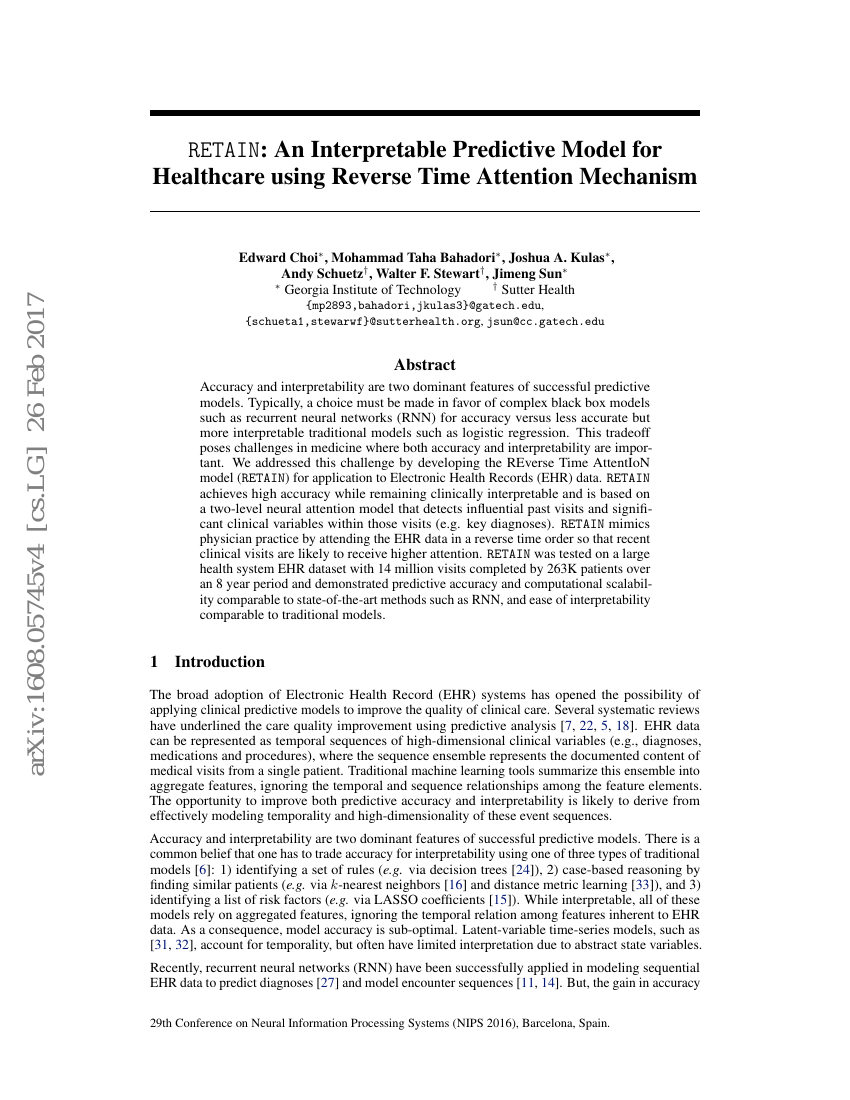Command Palette
Search for a command to run...
RETAIN: An Interpretable Predictive Model for Healthcare using Reverse Time Attention Mechanism
Edward Choi; Mohammad Taha Bahadori; Joshua A. Kulas; Andy Schuetz; Walter F. Stewart; Jimeng Sun

Abstract
Accuracy and interpretability are two dominant features of successful predictive models. Typically, a choice must be made in favor of complex black box models such as recurrent neural networks (RNN) for accuracy versus less accurate but more interpretable traditional models such as logistic regression. This tradeoff poses challenges in medicine where both accuracy and interpretability are important. We addressed this challenge by developing the REverse Time AttentIoN model (RETAIN) for application to Electronic Health Records (EHR) data. RETAIN achieves high accuracy while remaining clinically interpretable and is based on a two-level neural attention model that detects influential past visits and significant clinical variables within those visits (e.g. key diagnoses). RETAIN mimics physician practice by attending the EHR data in a reverse time order so that recent clinical visits are likely to receive higher attention. RETAIN was tested on a large health system EHR dataset with 14 million visits completed by 263K patients over an 8 year period and demonstrated predictive accuracy and computational scalability comparable to state-of-the-art methods such as RNN, and ease of interpretability comparable to traditional models.
Code Repositories
Benchmarks
| Benchmark | Methodology | Metrics |
|---|---|---|
| disease-trajectory-forecasting-on-uk-cf-trust | RETAIN | AUC (ABPA): 0.685 AUC (Aspergillus): 0.641 AUC (Diabetes): 0.764 AUC (E. Coli): 0.697 AUC (I. Obstruction): 0.578 AUC (K. Pneumonia): 0.715 I. Obstruction: 0.578 |
Build AI with AI
From idea to launch — accelerate your AI development with free AI co-coding, out-of-the-box environment and best price of GPUs.